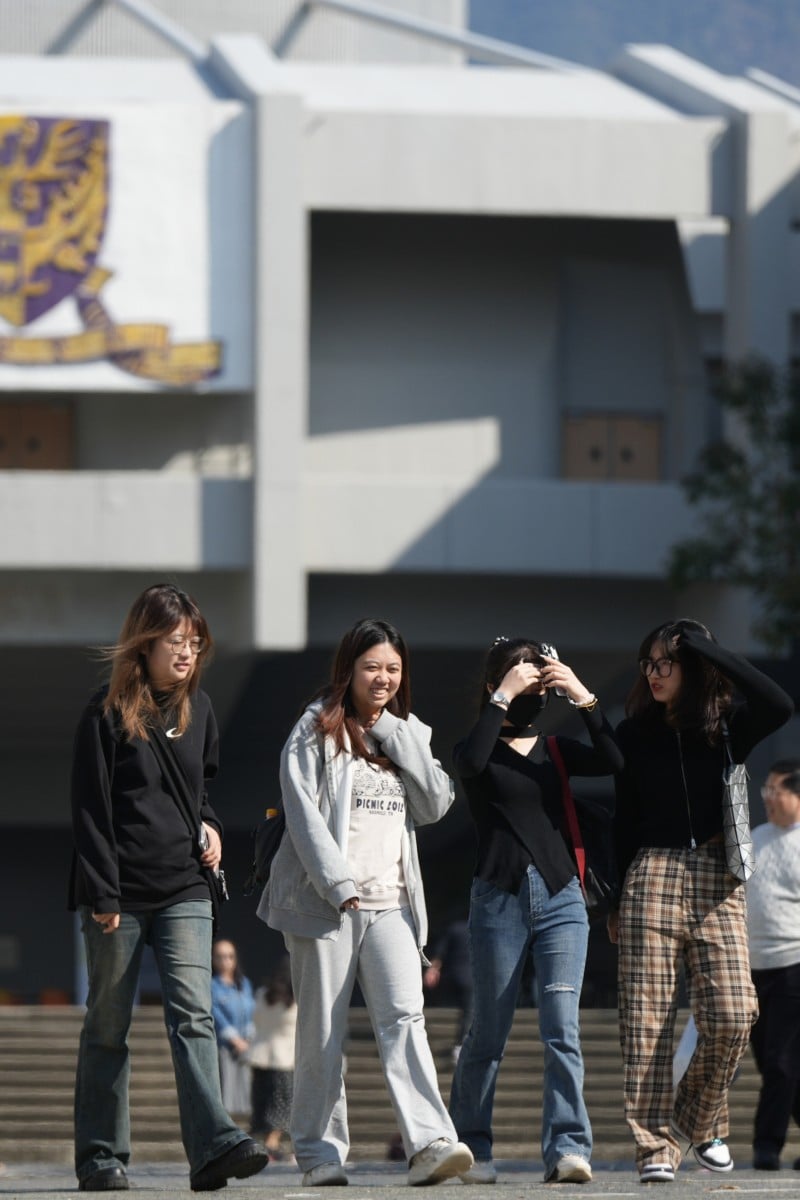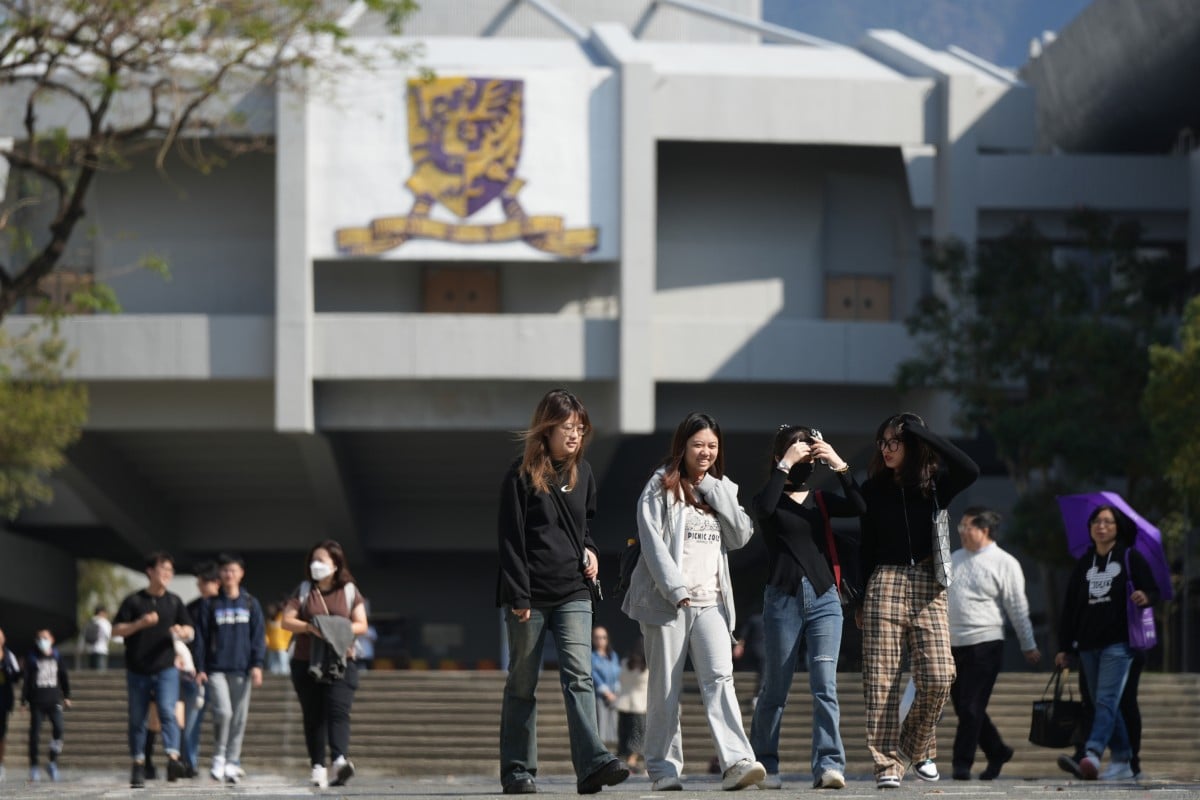
- Mainland Chinese pupils exceed 10,000 for the first time, making up seven in 10 non-local undergrads, with a drop in students from rest of the world
- Eight public universities get HK$30 million to go on overseas drives to internationalise their enrolments, with India main recruitment target
 Hong Kong’s public universities are on a recruiting spree for foreign students. Photo: Eugene Lee
Hong Kong’s public universities are on a recruiting spree for foreign students. Photo: Eugene LeeThe number of students from mainland China doing undergraduate courses at Hong Kong’s public universities has soared past 10,000 for the first time on record, currently accounting for about 70 per cent of all non-local students.
As the city’s universities try to attract more international students, India has become a target for recruitment.
The eight public universities will do a joint recruitment trip there in the first half of this year, especially eyeing mathematics talents sought after by other countries too.
According to statistics from the University Grants Committee (UGC), which allocates funding to the city’s public universities, there are 14,756 non-local undergraduate students at the eight tertiary education institutions.
Academic staff turnover rate at Hong Kong public universities highest since handover
They included 10,358 students from the mainland. Their proportion of the non-locals rose by 50 per cent from six years ago to 70.2 per cent.
The UGC data showed that about 4,400 non-local students came from “the rest of the world”, but did not give a breakdown by country.
The trend of mainland Chinese undergraduates has been rising since the data became available in 1996-97, when there were only five mainlanders.
On the other hand, the number from “the rest of the world” has shrunk by 15 per cent over the past five years.
Most non-locals major in the sciences, followed by business and management, engineering and technology.
Chief Executive John Lee Ka-chiu announced last October that the non-local student quota for publicly funded institutions’ taught programmes would be doubled to 40 per cent in September this year.
According to the UGC, the University of Hong Kong (HKU), the Hong Kong University of Science and Technology and Polytechnic University had already exceeded the existing quota and more than 20 per cent of their students were non-locals.
Polytechnic University recorded the highest jump in the proportion of mainland students among non-locals. They went from 60 per cent in 2018-19 to 84 per cent in the current school year.
A spokeswoman said the university was committed to building an international campus and had visited more than 30 countries and regions to recruit students in the first half of the current academic year.
She said that last year, PolyU had more than 29,400 students at all levels of its programmes who came from more than 70 countries and regions.
At HKU, the mainlanders’ proportion among non-locals rose from 54 per cent to 70 per cent over the same period.
A university spokesman said it had established partnerships with overseas institutions to develop immersive programmes and dual-degree ones.
“All these efforts aim to enhance and create a diverse and global learning environment … Currently, we focus on attracting students from countries and places including but not limited to Asia, Europe, America and others,” he said.
The other five public universities are the Chinese University of Hong Kong, City University, Baptist University, Lingnan University and the Education University of Hong Kong.
With the shrinking proportion of students from “the rest of the world”, a UGC spokeswoman said it had made available around HK$30 million (US$3.83 million) to the Heads of Universities Committee to promote internationalisation at the eight universities for three academic years between 2022 and 2025.
Education University of Hong Kong establishes first academic centre dedicated to national security
They can use the funding to join international education expos, organise promotional and student recruitment trips, and carry out marketing activities.
An exhibition to introduce Hong Kong as a study destination will be held next month in Perth, Australia, followed by similar events in the United States in May and in France in September.
“The universities will also embark on a joint recruitment trip to India in the first half of 2024,” the spokeswoman said.
Hong Kong can expect competition in wooing Indian students as other countries also hope to attract them.
Hong Kong government asked to enrol more students from mainland China amid falling birth rate
French President Emmanuel Macron last month announced that France aimed to attract 30,000 Indian students by 2030. More than 6,300 Indians were studying there in the 2021-22 academic year.
Writing on X, formerly known as Twitter, he said: “30,000 Indian students in France by 2030. It’s a very ambitious target, but I am determined to make it happen.”
According to Malaysian news outlet Malay Mail, Malaysian High Commissioner to India Muzafar Shah Mustafa announced last month that his country hoped to attract more Indian students as part of initiatives to promote its universities globally.
South Korea announced a plan last August to attract 300,000 international students by 2027. Country quotas will be increased for several countries, including India.
Lau Chi-Pang, a lawmaker and associate vice-president of Lingnan University, said India was “almost an English-speaking country” and many countries wanted its students because they generally had a sound foundation in mathematics and science.
“Indian graduates in the United States have been supporting the development of Silicon Valley,” he said. “Hong Kong also wants similar talents to help develop the innovation and technology field.”